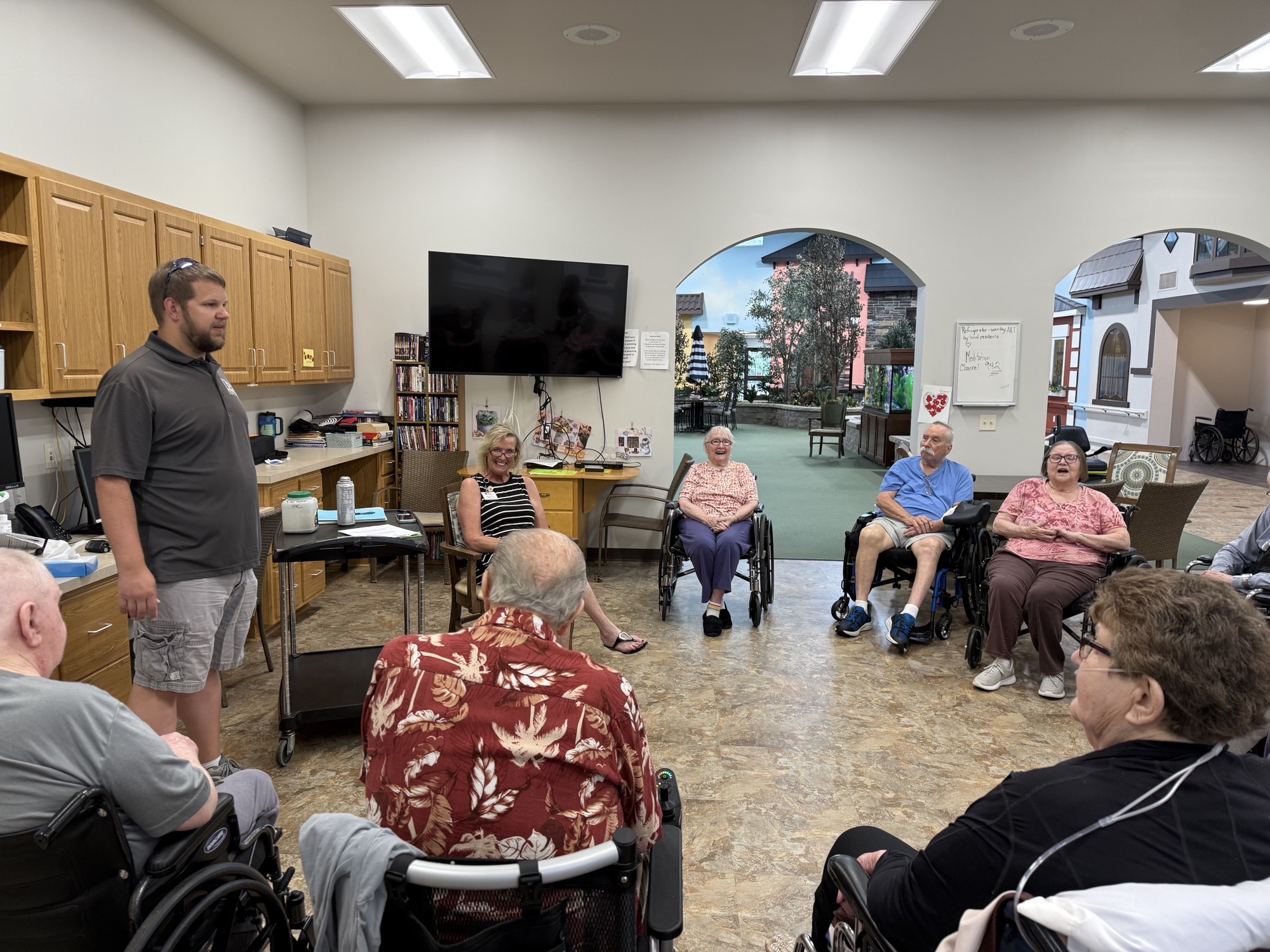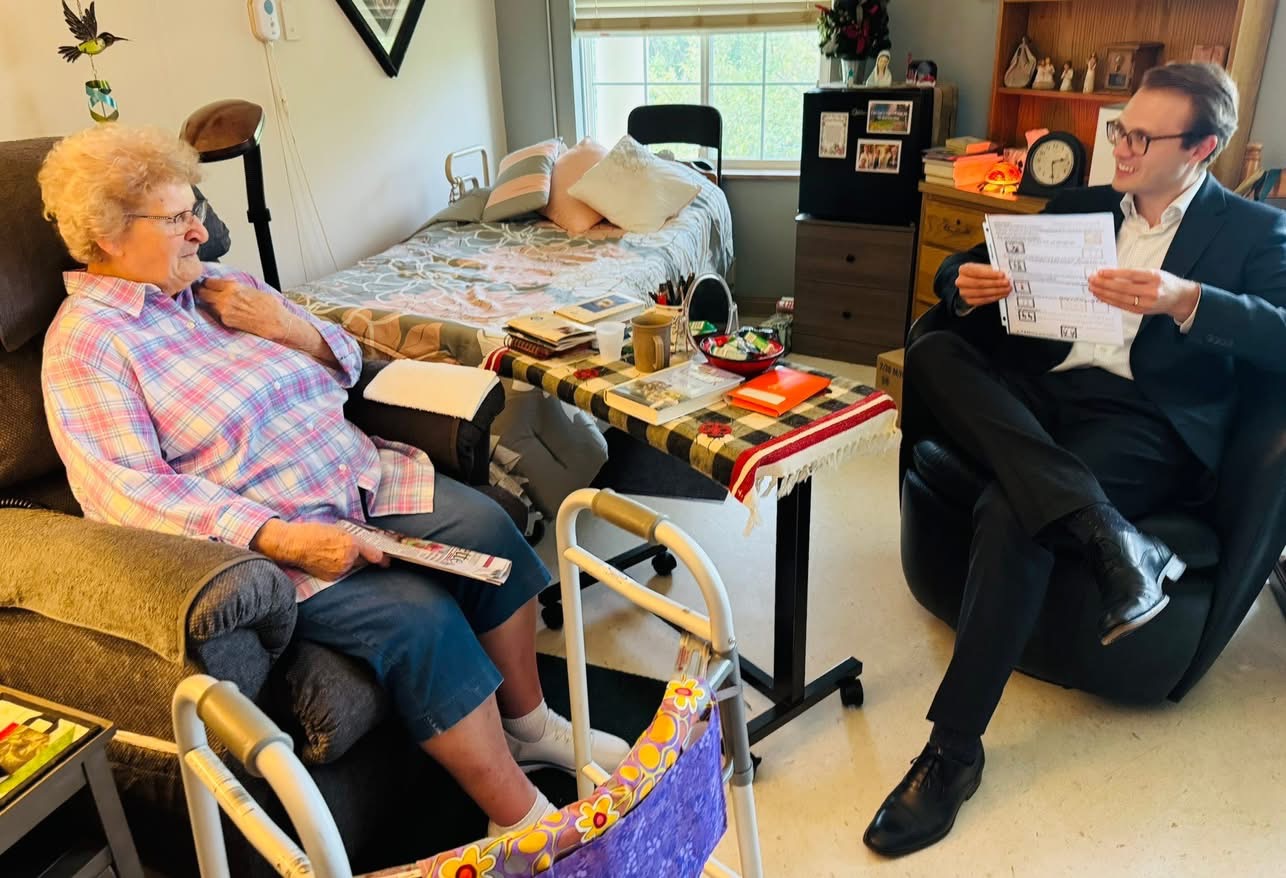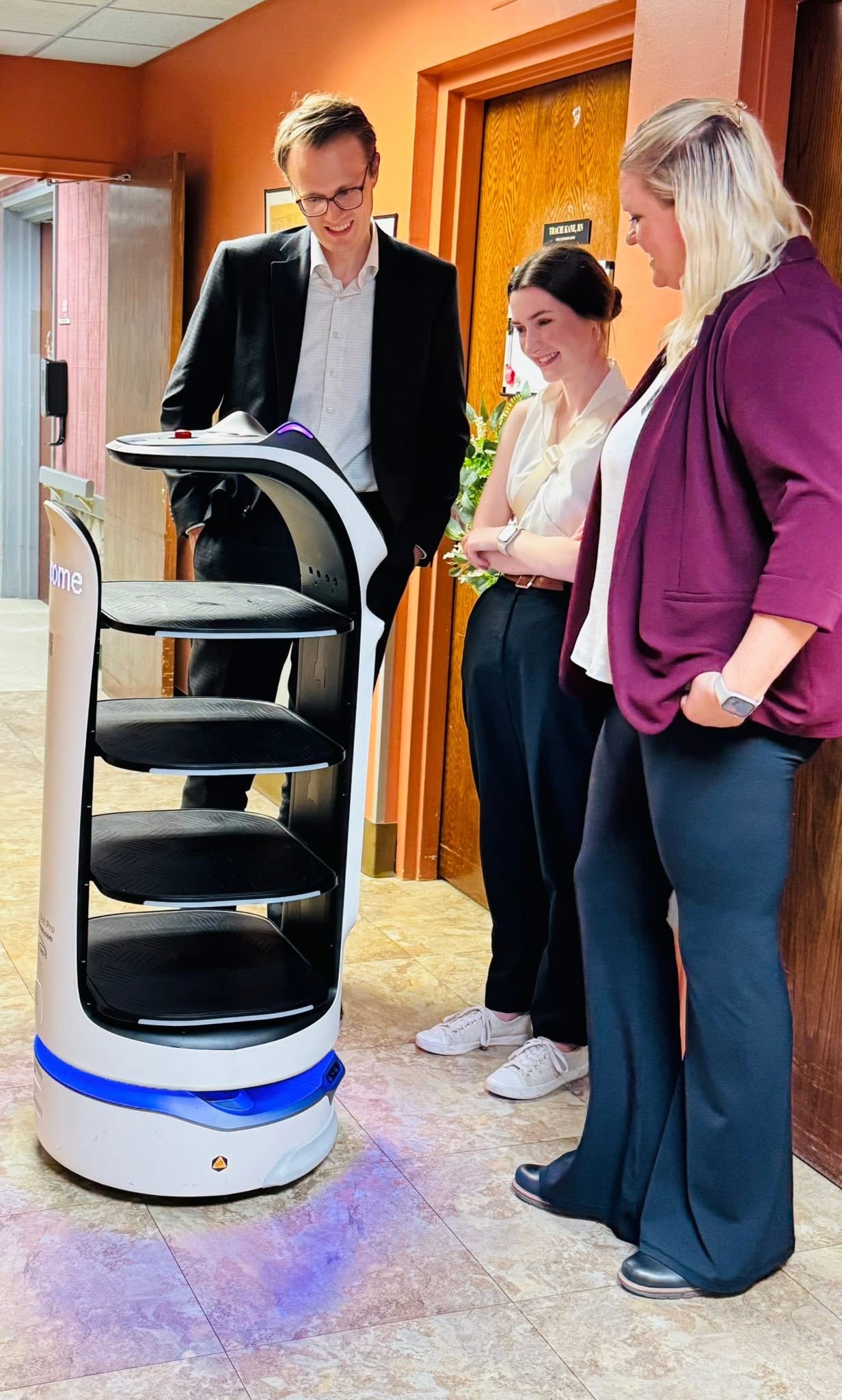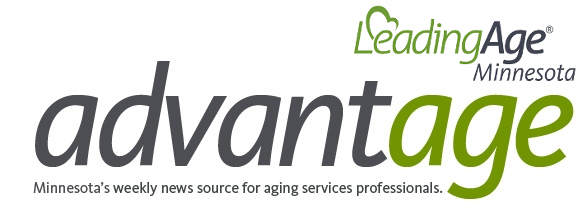July 17, 2025
Featured News
Analyzing the “One Big Beautiful Bill” – State Impact Remains Unclear
On July 17, 2025 by Mark Schulz
The passage of the federal "One Big Beautiful Bill" (OBBB) introduces substantial reforms to Medicaid, Medicare, and the Affordable Care Act premium tax credits, focusing on cost containment, program integrity, and greater state flexibility.
Key Provisions
Key provisions include the introduction of work requirements, tightened eligibility verification, financial incentives for states to ensure accurate administration, and revisions to federal subsidies—measures aimed at reducing federal expenditures to balance tax cuts and other spending priorities.
While certain elements of the bill are designed to support workers, the broader fiscal restructuring has sparked concern about the long-term viability of safety-net programs vital to older adults. These shifts could affect access to services, the operations of senior care providers, and overall resident wellbeing—especially for Medicaid providers, nursing homes, and non-profit healthcare organizations.
At the state level, Minnesota’s response remains in flux. Governor Walz's staff has indicated that the federal legislation might prompt a second special legislative session later this year, though no formal plans have been announced. As of now, the impact on aging services in Minnesota is unclear. Providers are encouraged to refrain from making operational or budgetary changes until more definitive guidance is issued by state leadership.
LeadingAge Analyses
We wish to acknowledge and thank LeadingAge National for its swift and thorough efforts in developing summary information following the passage of the OBBB on July 4, 2025. Their timely analysis provided critical insights that greatly supported the creation of the below information on the bill’s wide-ranging impacts.
Provider Taxes and State Directed Payments
- Limits on Medicaid Provider Taxes
- The law bans new or increased provider taxes not imposed before July 4, 2025, and reduces hold harmless thresholds beginning in 2027. These constraints may reduce state funding capacity for supplemental payments to providers, impacting Medicaid-supported services.
- Redefinition of Redistributive Taxes
- New definitions and limitations prevent provider tax models that overly burden Medicaid services, targeting states using steeply redistributive tax structures. Affected states face reduced tax revenue, which could affect provider incentives and service funding.
- Limits on State Directed Payments (SDPs)
- SDPs approved by May 1, 2025, are capped and will be reduced by 10% annually from 2028. Future SDPs must align with Medicare rate benchmarks, limiting states' flexibility to use SDPs as a funding tool and possibly restricting provider payment enhancements.
Rural Health Transformation Program
- Rural Health Transformation Program ($50B over 5 years)
- The law creates a $50B fund for rural health systems from FY2026 to FY2030, distributed through state-submitted transformation plans. Though the program may not fully offset Medicaid cuts, it offers aging service providers a potential, though limited, funding opportunity if included in state plans.
Medicaid Eligibility Changes
- Retroactive Eligibility Reductions
- Retroactive Medicaid eligibility is shortened to one month for expansion enrollees and two months for traditional enrollees starting in 2027. Providers may face higher uncompensated care costs and must expedite Medicaid application processes to reduce financial risk.
- Increased Medicaid Redetermination Frequency
- Beginning in December 2026, Medicaid expansion enrollees will undergo eligibility redetermination every six months instead of annually. This increases administrative burden on states and risks coverage loss for aging services staff and housing residents.
- Mandatory Medicaid Work Reporting
- Medicaid expansion enrollees must meet 80 hours/month of work or engagement, with complex exemption criteria and state system burdens starting in 2027. This could lead to coverage loss for residents and employees, further straining safety-net providers.
Affordable Housing for Older Adults
- Permanent Enhancement of Low-Income Housing Tax Credit (LIHTC)
- The new law increases state LIHTC allocations by 12% and lowers the 4% credit bond financing threshold from 50% to 25%. These changes, effective after December 31, 2025, are expected to generate 1.2 million affordable homes over 10 years and will significantly aid developers in addressing senior housing shortages.
- Green and Resilient Retrofit Program (GRRP) Rescission
- H.R. 1 rescinds $138 million in unobligated funds from HUD’s GRRP, terminating HUD’s contractual support for multifamily property improvements. While existing GRRP awards remain intact, awardees now bear full responsibility for completing their projects without HUD technical assistance.
- Medicaid and SNAP Work Requirements
- H.R. 1 imposes work requirements for Medicaid recipients aged 19–64 in expansion states, affecting potentially hundreds of thousands in HUD-assisted housing. It also raises the SNAP work requirement age limit to 65 and removes key exemptions, threatening food and healthcare access for vulnerable older adults.
Tax Policy
- Permanent Exclusion for Employer Student Loan Repayments
- Employer payments on student loans are now permanently excluded from taxable income, removing the prior expiration in 2025. This boosts long-term employer flexibility in supporting staff education benefits.
- No Tax on Overtime Provision
- A new temporary deduction (2025–2028) allows workers to deduct up to $12,500 ($25,000 for joint filers) in overtime income, subject to reporting and income limits. Implementation details are pending IRS guidance, but the provision could affect workforce reporting and payroll processes.
- Bonus Depreciation and Section 179 Expensing
- Restoration of 100% bonus depreciation and expansion of Section 179 (up to $2.5 million) will enhance cash flows for projects involving heavy capital investments. This benefits value-add strategies in sectors like senior living, enabling improved financial viability for improvement-heavy properties.
- Employee Retention Credit (ERTC) Limitations
- The law cuts off acceptance of ERTC claims for Q3 and Q4 2021 unless submitted by January 31, 2024. It also extends IRS audit authority and imposes due diligence penalties on promoters, increasing scrutiny and enforcement surrounding COVID-related tax credits.
- 529 Plan Expansion for Credentialing
- Tax-free 529 distributions can now be used for postsecondary credentialing expenses related to non-degree programs. This change supports workforce development in sectors like aging services by covering certifications such as CNA training.
- 1% Floor for Corporate Charitable Giving
- Corporate charitable contributions will only be deductible if they exceed 1% of taxable income, capped at 10%. This change, effective for tax years after 2025, is expected to reduce corporate giving by $4.5 billion annually, potentially harming nonprofit funding.
- Excess Compensation in Tax-Exempt Organizations
- The new law broadens the definition of employees subject to the excess compensation tax to include any individual earning over $1 million, not just the top five earners. This could increase the tax burden for tax-exempt organizations starting in 2026.
- Increased Reporting Thresholds for Contractors
- The 1099 reporting threshold for independent contractor payments increases from $600 to $2,000, adjusted for inflation. This reduces administrative burdens for businesses starting in 2025.
State News
New Consent and Fingerprinting Timeline for DHS Background Studies Effective July 14
On July 17, 2025 by Mark Schulz
The Minnesota Department of Human Services (DHS) is implementing a procedural change to the background study process, effective July 14, 2025. Originally announced on June 16, this update is being reiterated to ensure broad awareness among providers. The change brings the background study process into alignment with federal requirements by shortening the timeline for completing required steps.
Key Changes to the Background Study Process
Effective July 14, all background studies submitted—whether initiated by an entity or by the study subject—must adhere to the following new timeline:
- Step 1: Consent and Disclosure
- Must be completed within four (4) calendar days of the background study submission.
- This is a change from the previous 14-day window, during which both steps (consent and fingerprinting) were required.
- Step 2: Fingerprints and Photograph
- Must be completed within 10 calendar days after the consent and disclosure step is completed.
- The 10-day countdown begins immediately once the consent/disclosure is submitted—early completion does not extend this deadline.
Applicant-Initiated Background Studies
If a study subject initiates their own background study:
- They will complete the consent and disclosure as part of the online application process.
- Once the entity receives and submits the application, the 10-day window for fingerprinting and photographing begins.
What Happens If Deadlines Are Missed?
- If either step (consent/disclosure or fingerprint/photo) is not completed within its respective timeline, the study will automatically close.
- A new background study application will then be required, causing delays in onboarding or continued employment.
Important Reminders
- No Timeline Extensions: Completing the consent/disclosure early does not give more time for fingerprinting.
- Not Retroactive: Studies submitted before July 14 will still follow the previous 14-day combined timeline.
- Applies to All Background Studies: Including both new and renewal applications.
Resources and Support
DHS has committed to updating the NETStudy 2.0 User Manual and FAQs to reflect this change. These materials will be available shortly. Weekly reminders will continue to be sent to ensure smooth implementation.
For more information or assistance, contact the DHS NetStudy 2.0 Contact Center:
- Phone: 651-431-6620
- Email: dhs.netstudy2@state.mn.us
- Visit: Consent and Disclosure FAQ page
Please ensure this information is shared with all staff involved in the hiring or background study processes to avoid delays or disruptions in compliance.
Customized Living Providers: Be Alert to Disability Waiver Policies Limiting Coverage and Your Facility’s Standing
On July 17, 2025 by Bobbie Guidry
Assisted living facilities that provide customized living (CL) services to people on the Brain Injury (BI) and Community Access for Disability Inclusion (CADI) waivers must follow specific limitations based on the setting’s CL enrollment date.
What to Check Prior to Admission
Before authorizing CL services, lead agencies should confirm the setting is eligible to support a person based on the applicable limitations. Providers should be aware of the limitations that apply to their settings to assure payment for services is accessible prior to completing the admission process. We have recently received several calls from members who were asked by case managers to admit a resident for whom they were not eligible to receive payment.
The following link provides program information and limitations for customized living, the payment program for assisted living services (and locations exempt from assisted living licensure): CBSM - Customized living (including 24-hour customized living).
Disability Services Division
The Disability Services Division has placed a list on their website of providers enrolled to provide customized living as well as a list of customized living providers not able to serve individuals under the age of 55: CBSM - Resource: Customized living provider settings only allowed to serve people on the BI and CADI waivers who are age 55 and older.
The resource is to be used in conjunction with the description of each category on the list, also found on the DHS website.
Federal News
CMS Revalidation Deadline Extended to Jan. 1, 2026
On July 17, 2025 by Mark Schulz
The Centers for Medicare & Medicaid Services (CMS) has extended the deadline for off-cycle Medicare provider revalidation to Jan. 1, 2026 — a significant shift from the previously announced Aug. 1, 2025 deadline. This marks the third postponement of the requirement.
Important Note: The extension offers much-needed relief to nursing homes still working to meet the updated reporting obligations. While the extension provides more time, the reporting requirement itself remains in effect. CMS is expected to formally announce the extension soon.
Facilities should continue preparing to comply and avoid delays closer to the new deadline. For more details about how and what to submit, please review our posting discussing those details here.
Notable News
Interactive New American Resource Map – Now Live!
On July 17, 2025 by Kirstan Ketter
We’re excited to share that the New American Resource Map is now available! This interactive tool highlights organizations, programs, and resources across Minnesota to help connect your staff—especially New Americans—with resources that support their lives outside of work. When our staff are well-supported, retention rates increase, and our entire long-term care community benefits.
What You’ll Find on the Map
This evolving resource features a variety of community-based supports, including:
- Local nonprofits offering family and basic needs support
- Culturally specific programs for immigrants and refugees
- English-language learning and tutoring services
- Immigration attorneys and legal referral organizations
- Childcare guides and early education programs
- Workforce centers, job coaching, and employment support
- Transportation and mobility resources
- Resettlement services and welcome centers
Whether you’re looking for legal help, English Language Learning classes, or a reliable childcare provider, this map makes it easy to find trusted support nearby.
Who This Map Supports
For New American Staff:
The resource map is a connection to services and support in Minnesota. It helps individuals and families:
- Navigate immigration processes and find legal counsel
- Access language learning, job training, and employment programs
- Connect with culturally relevant community spaces
- Build a sense of belonging and support in their new home
While created with New Americans in mind, the map is a valuable tool for all staff seeking local support and connection.
For Long-Term Care Employers:
This map empowers employers to:
- Provide culturally relevant referrals and resources to support your team members
- Deepen recruitment pipelines with local community partners
- Foster stronger relationships with local organizations and leaders
- Advance inclusive workforce strategies in meaningful, authentic ways
Help Us Grow the Map!
This map is a dynamic tool—and we need your help to keep it strong and relevant. If you know of a local organization, service, or program that supports New Americans, refugees, or families in your area, please take a moment to share it. The best maps are built with local knowledge—and yours is invaluable.
Send your recommendation to Kirstan Ketter and include:
- The name of the organization
- One-to-three sentences about what they offer
- Website or contact information (if you have it)
Every suggestion brings us closer to making this map a truly powerful tool for connection and support. Let’s build it together—one community resource at a time.
Why This Matters
Nearly one-third of healthcare workers in Minnesota are immigrants, and long-term care organizations have long benefitted from the skills, values, and resilience of New Americans. This map is more than a list—it’s a bridge between senior care providers and the communities they serve. Let’s work together to strengthen those connections.
This tool is made possible through the New Americans Long-Term Care Workforce Grant from the Minnesota Department of Human Services.
Member News
Lakehouse HealthCare and Rehabilitation Center Shares Vision with Minneapolis Mayor
On July 17, 2025 by Jessica Lacher
LeadingAge Minnesota staff members Jessica Lacher and Shelli Bakken recently joined members Leon Tarlow and Reuben Knobel of Lakehouse Healthcare and Rehabilitation Center for a meet-and-greet with Minneapolis Mayor Jacob Frey.
The group discussed workforce initiatives at Lakehouse and shared exciting updates about the longstanding care center in the city’s Bryant neighborhood. Plans include the addition of an in-house hospice area and a dialysis unit.
Thank you to Leon and Reuben for taking time to engage with the community and elected officials!
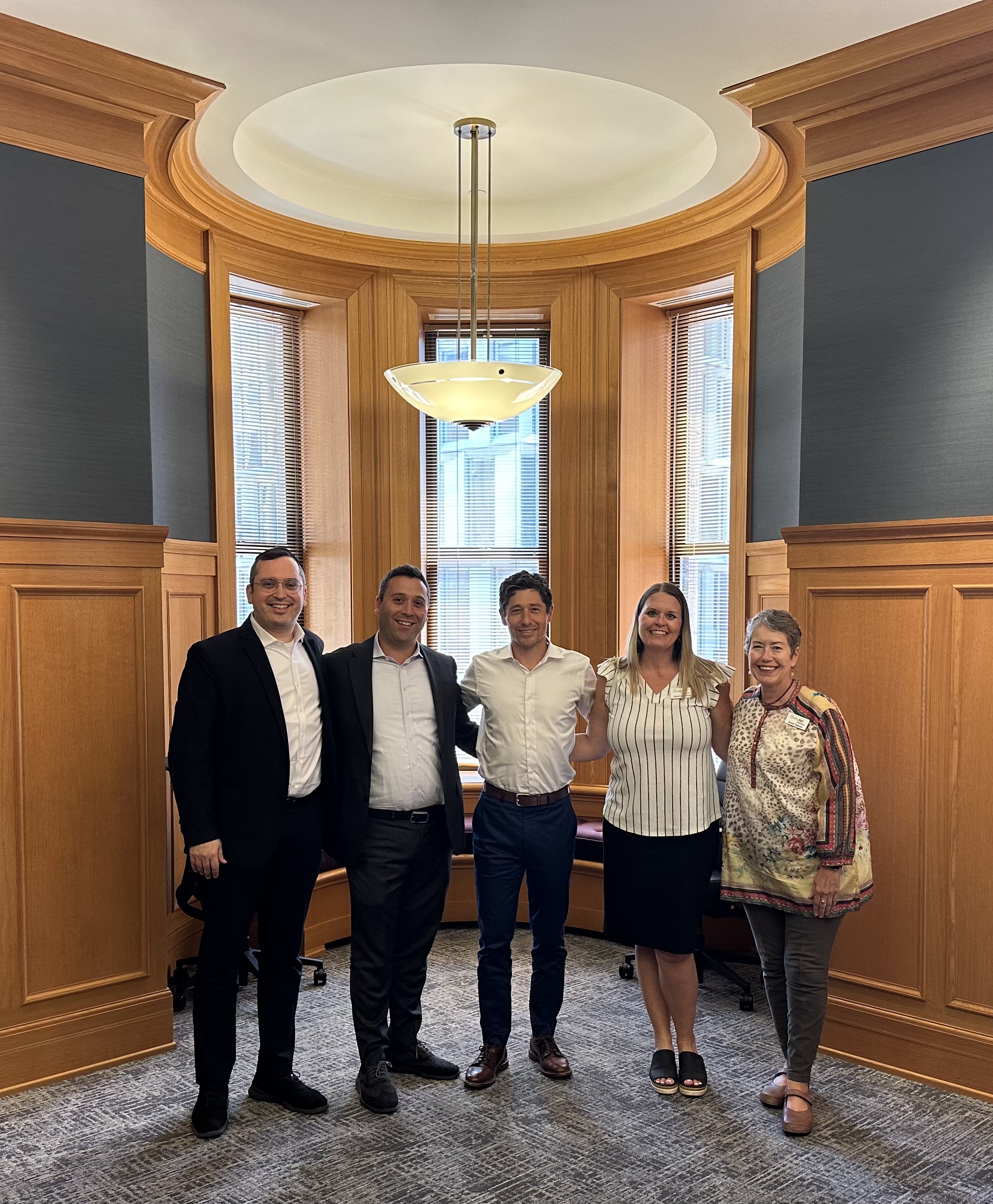
St. Francis Health Services Showcases New Technology, Welcomes State Senators
On July 17, 2025 by Jessica Lacher
LeadingAge Minnesota member St. Francis Health Services had a busy and exciting week filled with innovation and advocacy. Heritage Manor Healthcare Center in Chisholm made headlines in the Mesabi Tribune for hosting a public event that introduced two new additions to its programming: Pepper, an interactive humanoid robot, and Mobii, a state-of-the-art projection system.
Integrating Technology
Guests at the event were treated to live demonstrations and hands-on opportunities to explore how the technology will be used in daily programming. Pepper is designed to engage and entertain residents by singing, reading stories, leading brain teasers and exercise sessions, or operating in autonomous mode to answer questions—similar to voice assistants like Alexa and Siri, according to Autumn Herzog, grant coordinator for St. Francis Health Services.
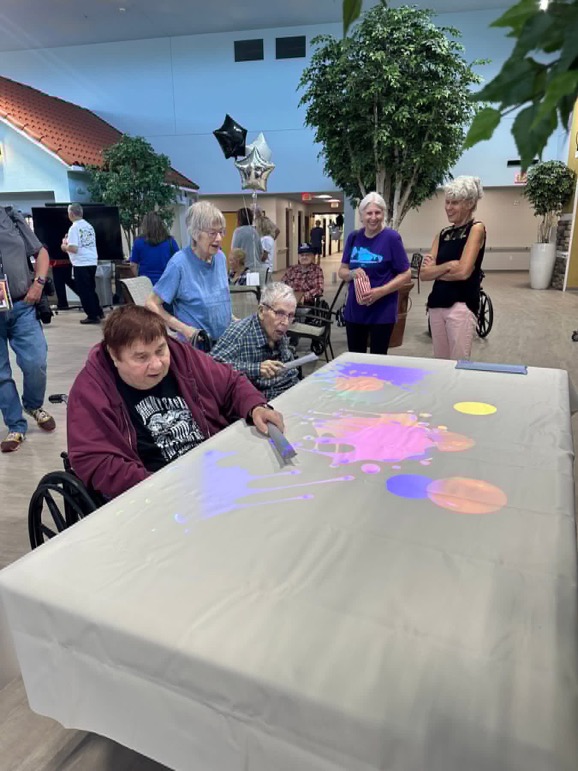
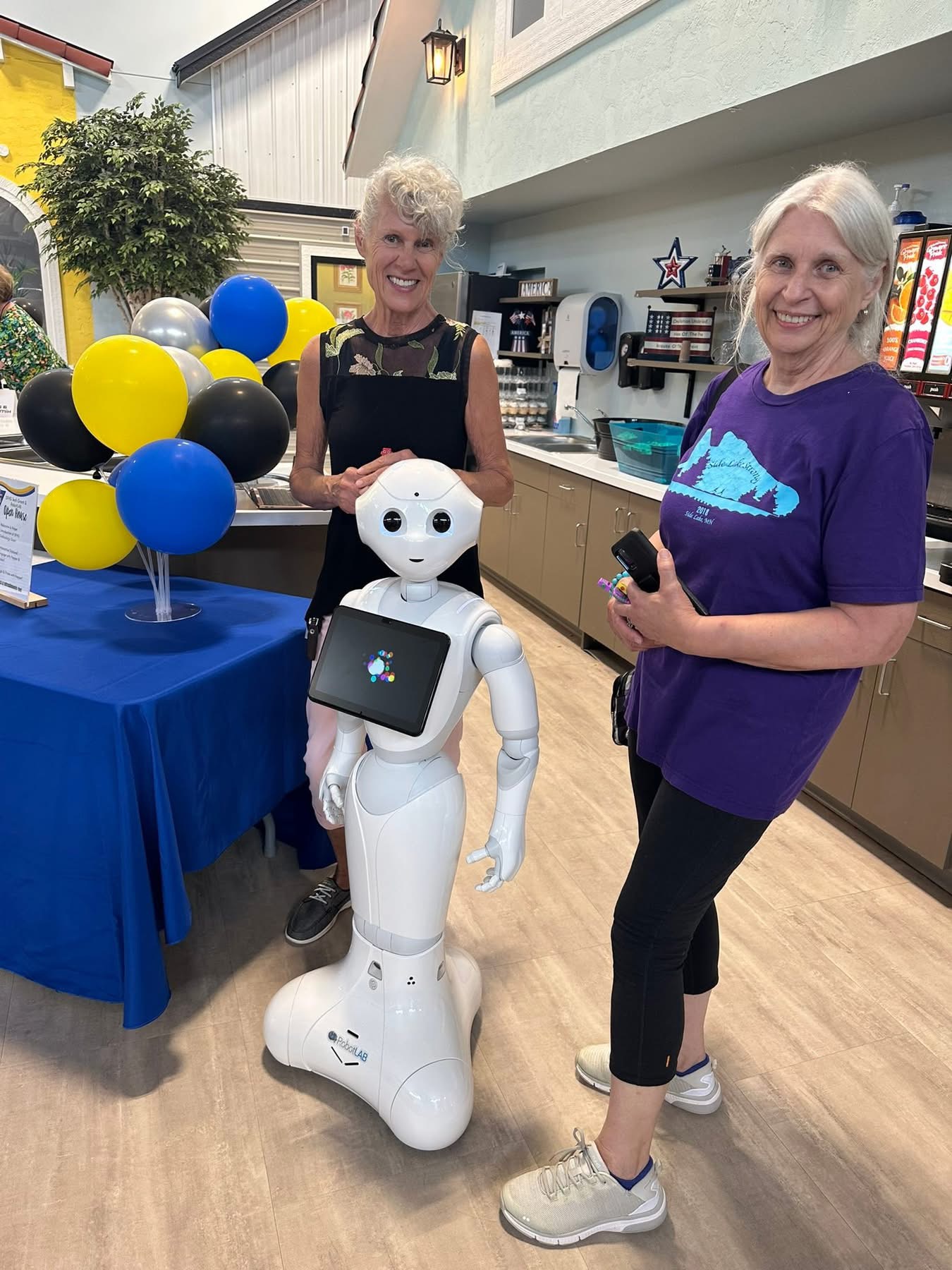
Welcoming State Senators
Elsewhere in the state, two other care centers welcomed their respective state senators for in-person visits. Sen. Bill Lieske visited Farmington Health Services, and Sen. Jordan Rasmussen stopped by Browns Valley Health Center. Both took time to speak with residents and staff, listening to their experiences and discussing the challenges facing long-term care funding in Minnesota.
St. Francis Health Services is grateful for the opportunity to share its innovative work and to connect directly with policymakers on issues that matter to its community.
Thank you to the team at St. Francis Health Services for your continued advocacy work post session!
